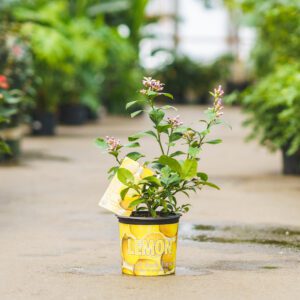April 3, 2023
Growing Citrus in New England – don’t be afraid to try!
 When we think of citrus in the US most of us call to mind the warm and sunny climates in Florida and California where oranges, lemons, limes, grapefruits, and kumquats can flourish outdoors. But even in New England, where our winters are not exactly conducive to growing tropical plants, we can get creative and enjoy fragrant citrus blossoms, gorgeous glossy foliage, and homegrown vitamin C!
When we think of citrus in the US most of us call to mind the warm and sunny climates in Florida and California where oranges, lemons, limes, grapefruits, and kumquats can flourish outdoors. But even in New England, where our winters are not exactly conducive to growing tropical plants, we can get creative and enjoy fragrant citrus blossoms, gorgeous glossy foliage, and homegrown vitamin C!
So, if you’re a Bay Stater looking to enjoy your very own oranges or fresher than fresh lemonade, we’re here to help! Here are a few things to keep in mind when growing citrus in Massachusetts:
Location, location, location.
Citrus plants are hardy in zones 8, 9, and 10 and won’t survive winters outdoors here in zone 6 so it’s important that you ensure your citrus plants have a winter residence inside your house as well as a summer home outdoors. Offer at least a few hours of direct sunlight each day all year round. What does “direct sunlight” mean indoors? Placing your citrus plant within 3-4 feet of a South-facing window with unobstructed light (be sure to check for interfering shade trees or overhangs outside) is ideal. South-facing windows offer the greatest amount of light throughout the day. A close second when it comes to bright indoor light is western exposure where you get a few hours of strong afternoon sun each day.
How can you tell which direction your windows face?
- Pay attention to where the sun rises and sets in relation to your home (the sun rises in the east and sets in the west)
- Locate your home on GPS to find the cardinal direction your home faces.
- Use a compass, simple but highly effective.
No south-facing windows? You may still be able to give citrus a go! Try out a grow light or start with a very small citrus plant and you may be able to help it adapt to lower light conditions!
Tips for relocating your citrus when the time comes:
- Choose a smaller variety that’s easier to move. Good choices include tangerines, ponderosa or Meyer lemons, and Satsuma or Calamondin oranges.
- If you want to use a larger variety, consider adding a plant dolly on casters to make it easy to roll in and out of the house.
- Remember that when you bring your citrus outside for the summer it will need to gradually acclimate to full sun. Start by placing the tree in a semi-shady location and move it little by little into full sun over two weeks.
Temperature.
Citrus plants say brrrrrr when temperatures dip below 50 degrees at night. Watch the weather for a clue as to the best time of year to bring your plants indoors. Indoors, citrus plants are happiest when they are kept in temps between 65 and 70 during the day and 55 to 60 at night.
Water.
Citrus plants will be happiest if soil is evenly moist but not too wet. A moisture meter is something to consider when growing citrus. During the summer when your container is outdoors in full sun, give a thorough watering twice each week. Use a watering wand or watering can to separate the stream and mimic rain and water the entire surface area of the soil until you see a little water dribble out of the drainage holes. In winter, you’ll water less but you may want to consider using a humidifier to mitigate the dry indoor air. Check out our winter watering guide for more tips!
Avoid putting your citrus plants in the same room as a wood-burning stove. This may create conditions that are far too dry for healthy citrus to thrive.
Pollinating.
Citrus flowers need to be pollinated to set fruit, and the most important pollinators for citrus trees are bees! So, if you want fruit you’ll need to ensure that your citrus plants spend the warm months in their summer home for plenty of playtime with their winged buzzing friends.
If your citrus plant sets flowers during the winter months, you’ll need to manually pollinate with a paintbrush or Q-Tip. This is easy enough to do. Gently brush the pollen-covered anthers with a paintbrush and then touch your brush to the stigma in the center of the flower. Check out this video to see how easy it is!
Fertilizing.
Citrus plants are heavy micro-nutrient feeders and require a special diet to stay healthy. We recommend fertilizing with True Organic Citrus and Avocado Food or Espoma Citrus Tone every 3-4 weeks during the growing season (March – August). Avoid feeding your plant during the winter months, this is the time to avoid encouraging new growth. Let them rest.
Pest management.
Like all fragrant plants, citrus has a habit of attracting unwanted pests. To mitigate this, give your plants a good shower with a hose before bringing them inside for the winter. Let them dry then spray all the foliage and stems with Captain Jack’s Citrus, Fruit, and Nut Orchard Concentrate or neem oil.
Growing tropical plants outside the tropics isn’t easy but it’s oh so satisfying. Remember to be patient with yourself and with your plants…when it comes to plant cultivation, there is no such thing as a green thumb or a black thumb. It’s the patient, inquisitive thumb that will find the greatest rewards.
For more information, download our printable Citrus Care Guide!
Shop our Citrus Selection Online!
